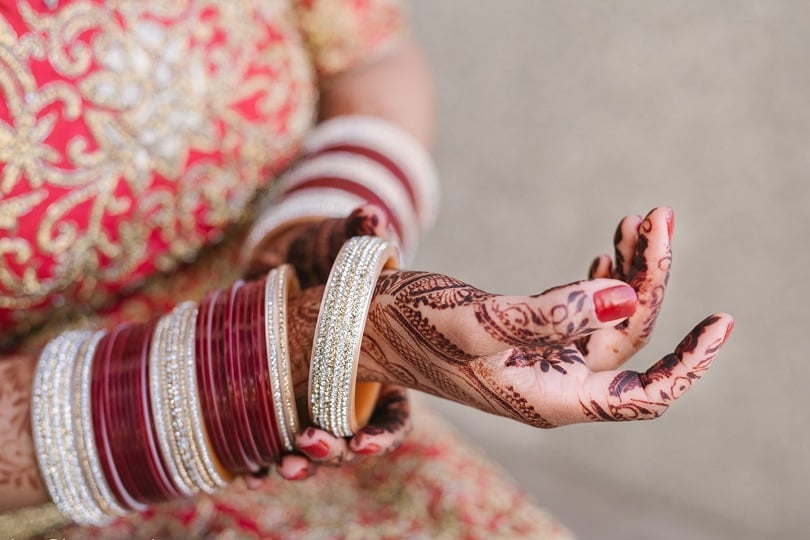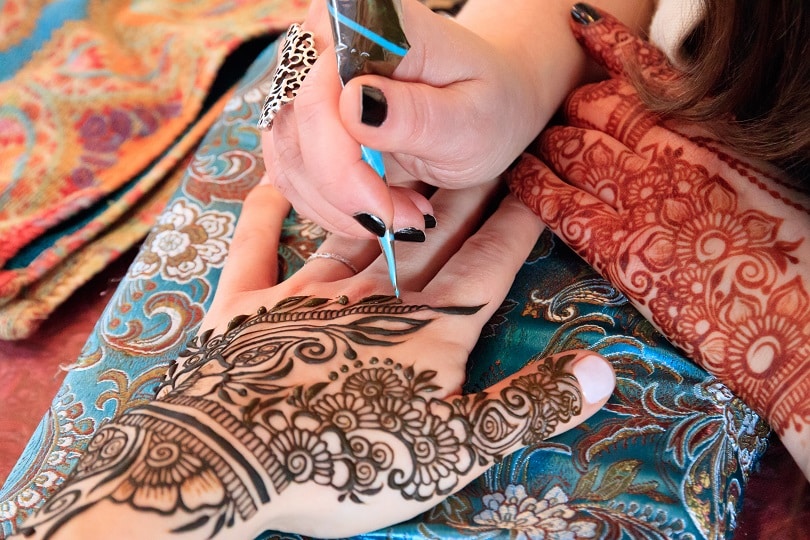Ahh, the Punjabis!!! Well, we all have Punjabi friends in our life and we know what a fun-loving breed they are! Punjabis are happy-go-lucky and extremely vivacious people. They love to party and are also excellent hosts too; you know you are sure to be filled with the best of food and desserts once you are invited to their homes. Well, their fun-loving nature reflects in their weddings too, and also in all the pre and post-wedding functions whether they are happening in the big Kothis of Punjab or in the wedding lawns of Kolkata, Delhi, wherever.
Planning Wedding any time soon?
Then, Give us a call
08750287502
The main attractions of any big fat Punjabi wedding are delicious non-vegetarian feasts, delicacies, good music and lots of dancing apart from a lot of jokes and laughter. Well, some adjectives we can use for them are colourful, loud and full of Masti and Dhamal. There’s nothing that you’d want to miss about Punjabi weddings from pretty girls in those adorable ethnic wear, exhibiting their impeccable dancing skills to aunts showing off their dangerous musical talents. Their events are mostly all about light, love, colour, giggles, dancing, songs, gossip and booze!
Let’s get to know the Punjabi wedding rituals in brief. Believe us, even reading them is as fun as being a part of them, till you witness them the next time in your life.
- Roka
Roka ceremony is engagement between the families of the bride and the groom. It is performed on a mutually suitable chosen date as ‘shubhmuhurat’. Gifts and cash are exchanged here and the function is attended by family members and close friends of the families. The marriage date is fixed after roka.
- Sagan
Sacred fire ceremony named “havan” is performed and the ceremony generally takes at the groom’s house. Here, the girl’s father applies the “tikka” on the boy’s forehead who takes the blessing of the girl’s family members. Mithais and cash are given by the relatives and friends present from the girl’s side to the boy. It is indeed a happy and peaceful ceremony between the families.
- Chuda
The ritual involves a havan or puja that is conducted by a pundit or priest and is conducted on the morning of the wedding. The oldest maternal uncle of the bride has an important role to play here and this is also the time when the maternal uncle presents the wedding lehenga to his niece. He is the one who puts the set of red and cream ivory bangles on the bride, touched and blessed by all those who are present as a part of this ceremony.

Flowers are sprinkled on the bride and sweets are distributed to commemorate the beginning of all the other Punjabi wedding traditions. All relatives, friends, and cousins tie kaliras on the kada or bangle on the bride’s wrists once the chuda has been worn by the bride with a sense of pride in her heart.
- Vatna
This tradition is also conducted at the bridegroom’s house. The bride is facing four lamps or Diyas. Here, the female relatives and friends put Vatna (a paste made of turmeric plus mustard oil) on the body of the bride. It is considered to be favourable for all four lamps to remain glowing brightly so that the brightness on the bride’s face rests perpetually. The turmeric acts like a scrub making the bride’s body beautiful and helps to give her that much-needed glow before the wedding. Haldi is applied on the groom’s face as well. All their respective family members and relatives also apply oil on the bride and the groom’s forehead and give their blessings.
- Ghadoli
The relatives, family members, and friends visit the nearby temple to fill a pitcher full of holy water after the completion of the vatna ceremony at the bridegroom’s house. Both the bride and bridegroom go off to get ready for the main wedding as they have a bath in this holy water.
- Chunni Ceremony
This auspicious ceremony is performed by mother of the groom who covers the head of the bride with a red scarf or chunni which signifies that from now on the bride-to-be is responsible for upholding the honour and pride of the groom’s family. The bride also wears the clothes and jewellery brought by her in-laws and the groom marks her head with sindoor or vermilion as a sign of commitment.
- Ladies Sangeet
The ladies get together and have a bash. And well, all the male members die to become apart of this ladies sangeet. The ladies present at the event indulge themselves in eating snacks, gossiping, teasing the bride. Everyone has to come up and dance and be part of the fun and cheerful moments. This event is all about singing, dancing, and merrymaking giving everlasting memories to the bride of her girl’s troupe.
- Mehendi Ceremony

A professional artist is usually called upon the event for fine artistic designs and the mehendi is one of the most important of the several Punjabi wedding rituals. Here, the bride, her sisters and other female members extend their arms to have them designed with different Mehendi designs. Moments like these capture the real emotions of the family and everybody wants to see the hands of the bride for the special design that is applied to her.
- Gana Bandhna
Here, a morning prayer is conducted by the bride and the groom in their respective homes, where the Gana (sacred thread or mouli) is tied to their right wrists in the early morning of the wedding day. The Gana tied with as many knots as possible in order to make it difficult to untie later.
- Sehrabandi
The Vatna is followed by the dressing up of the groom in his wedding attire just like it’s done in the bride’s home. A pooja is performed after the groom is ready in his wedding attire. The “sehra” is then tied to the groom’s head by an elderly relative or the groom’s father. Touched by all the people present in the pooja, the groom ears a pink colour turban on his head. Gifts and cash are given to the boy as a token of good luck by all those who are present.
- Ghodi Chadna
Here, the groom’s sister-in-law lines the boy’s eyes with Surma to ward off all the evils as the groom makes his way to the wedding. Thereafter, the groom’s sisters and cousins feed and adorn his mare. People use cash and perform the Varna ritual to ward off the evil eye. The groom immediately leaves his home for the wedding venue after this ritual by climbing his horse.
- Milni
As the Baraat is welcomed by the bride’s family, both the families gather for the Milni which is basically a formal introduction of key relatives from each family. Before the actual milni begins, ardaas is done and the relatives of the bride are introduced to the corresponding relatives of the groom. This is one of the warmest rituals of the several Punjabi wedding traditions. Lots of hugs and warm exchanges are done between the family members from both sides who look forward to witnessing rest of the ceremony.
- Varmala
The varmala or the exchange of wedding garlands is the first instance when the bride and groom meet each other on the wedding day. The groom on entering the venue is taken to a raised stage where he sits and waits for the bride. Garlands are exchanged once the bride arrives, and this is a ceremony that involves a lot of teasing and fun along with some show of strong emotions.
- Kanyadaan
The father of the bride gives his daughter’s hand officially to the groom and this ritual is also known in Hindu Traditions as the biggest sacrifice for a bride’s family.
It is hard for the father to convey it to the groom that his daughter is now the official daughter of the new family and that he has given her to the Groom with all his best wishes.
- Phere
The Phera’s include taking seven circles around the sacred flame and it is the tradition in the Hindu wedding that seals the marriage. Pheras are the most sacred part of the ritual and the chanting of mantras during the Phera’s by the bride and the groom has a lot of significance in their married life. Post the Phera, Groom applies sindoor in the division of the bride’s hair and also ties the mangal sutra around her neck. Friends and family shower rose petals on the couple throughout the Phera’s giving them their best wishes. The blessings of all the elders are taken as well by the newly wedded couple.
- Vidaai/Doli

It is indeed the most emotional moment for the bride and her family and just about everyone. By throwing a handful of rice over her shoulders in her family’s direction, the bride bids a tearful goodbye to her family. She expresses her gratitude towards them and makes the first start as the new bride. She bids her last goodbyes as she leaves her maternal home in a decorated car. This bridal procession is known as Doli.
All Punjabis follow their customs wholeheartedly and Punjabi wedding rituals are a traditional extravaganza. When you are a part of a Punjabi wedding, you witness the glory of the functions and also the utmost significance behind each ritual in its utmost form. Punjabi weddings seem to overflow with a lot of good cheer and impending happiness right from the start to the end making you an integral part of it in its own way. Thus, a big fat Punjabi wedding is arguably the one with the greatest fun.
OR
Give us a Call
08750287502
- Top 16 Things to do in Kolkata in 24-hours - July 25, 2019
- Savour These Delicacies While in Bali for a True Gastronomical Treat! - May 29, 2019
- A Seasonal Guide to Sri Lanka – The Pearl of the Indian Ocean 2019 & 2020 - May 24, 2019
- Six Experiences You Mustn’t Miss in Sri Lanka for A Fabulous Trip! - May 24, 2019
- 5 Bazaar Ramadan terbaik di Kuala Lumpur. - May 15, 2019
- Planning to Visit Ladakh? Here is a Seasonal Guide to Help You Plan Your Trip - May 8, 2019
- Visit These Places in Bali For an Exciting Vacation in The Tropical Island! - May 7, 2019
- 8 Best Places to Spend Your Vacation in the Hills of Himachal Pradesh - April 17, 2019
- Places to Visit in Thailand - April 16, 2019
- Want to Visit Bali at Minimum Cost? Follow Our Guide to Travel Bali on a Budget! - April 12, 2019

